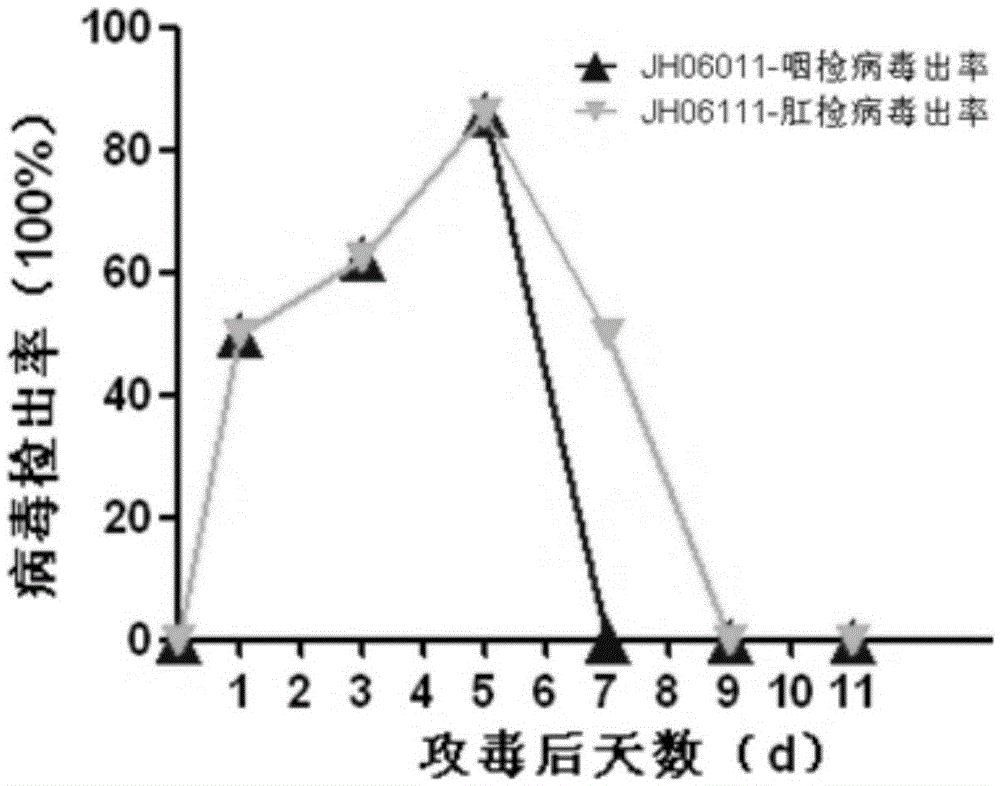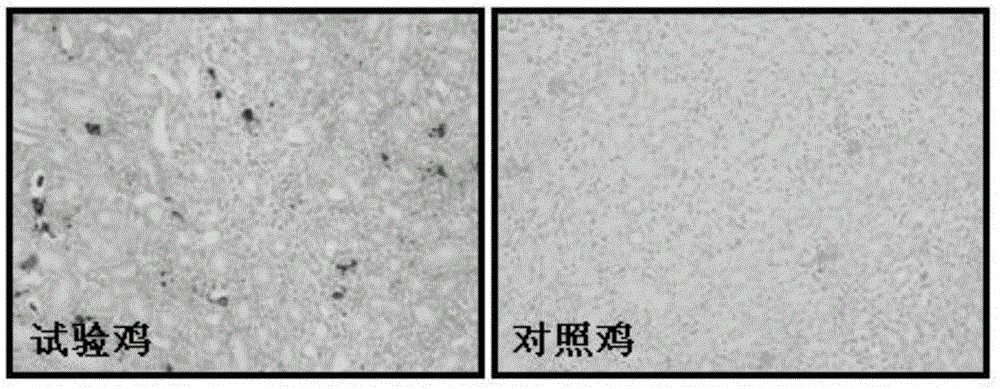Avian infectious bronchitis virus natural mutant
A technology of natural mutation and bronchitis, applied in the field of virology, can solve the problems of not being able to protect chickens well against the attack of wild virus and the difficulty of prevention and control
- Summary
- Abstract
- Description
- Claims
- Application Information
AI Technical Summary
Problems solved by technology
Method used
Image
Examples
Embodiment 1
[0028] [Example 1] JH06111 isolation and identification
[0029] 1 Virus isolation and identification
[0030] In 2006, the virus was isolated from the suspected IBV-infected chicken kidney tissue collected in Jinhua, Zhejiang. Specific method: dissect the sick and dead chickens for inspection, and collect kidney tissue. After the kidney tissue was cut into small pieces, sterile PBS was added at a ratio of 1:3 to 1:10, thoroughly ground, and repeatedly frozen and thawed at -70°C and 37°C three times. After centrifugation at 5000rpm for 5 minutes, the supernatant was taken and sterilized by filtration with a 0.22 μm filter membrane. Inoculate 9-11-day-old SPF chicken embryos through the allantoic cavity of chicken embryos at a dose of 0.2 mL / embryo, culture at 37°C for 72 hours, collect allantoic fluid, and pass blindly for 3 generations. Blind transfer to the third generation of chick embryos was observed to curl up, similar to typical dwarf embryos. The allantoic fluid of...
Embodiment 2
[0033] [Example 2] JH06111 pathogenicity and the detection of infected chicken virus
[0034] The allantoic fluid of chicken embryos infected with the JH06111 whose gene copy number has been determined above was treated with IBVM gene 4*10 6 Copies / 200ul / capacity was used to inoculate 10 1-day-old SPF chicks with nasal drops, and sterilized PBS-inoculated chickens were used as negative controls. The inoculated chicks were reared for 30 days in a negative-pressure high-efficiency polymer air-filtered stainless steel isolator. Observe the clinical symptoms of the chickens every day, including mental state, food intake, whether breathing is smooth, and whether the feces are normal. 5-7 days after inoculation, 2 chickens were autopsied to observe the lesions. On the 3rd day after JH06111 inoculation, the test chickens had mild depression and dyspnea, and no death occurred during the test. The autopsy found that the kidneys had no obvious swelling and no urate deposition.
[00...
Embodiment 3
[0036] [Example 3] JH06111 infected chicken antibody level detection and challenge test
[0037] Take IBVM gene 4*10 6 Copies / 200ul / capacity was used to inoculate 10 14-day-old SPF chicks with nasal drops, and sterilized PBS-inoculated chickens were used as negative controls. The blood was collected the next day after inoculation, and the antibody level in the serum of vaccinated chickens was detected by the IBVnsp5-ELISA method established in the laboratory. As a result, on the 9th day after inoculation, it was detected that the seroantibody conversion of the inoculated chickens continued until 27 days after the inoculation, and the antibody also maintained a higher level ( image 3 ). In order to understand whether the existing serum antibodies are protective, 30 days after inoculation, the IBV virulent strain JH06011 was used to challenge the virus. As a result, all chickens vaccinated with JH06111 survived without obvious clinical symptoms and autopsy changes, while the ...
PUM
 Login to View More
Login to View More Abstract
Description
Claims
Application Information
 Login to View More
Login to View More - Generate Ideas
- Intellectual Property
- Life Sciences
- Materials
- Tech Scout
- Unparalleled Data Quality
- Higher Quality Content
- 60% Fewer Hallucinations
Browse by: Latest US Patents, China's latest patents, Technical Efficacy Thesaurus, Application Domain, Technology Topic, Popular Technical Reports.
© 2025 PatSnap. All rights reserved.Legal|Privacy policy|Modern Slavery Act Transparency Statement|Sitemap|About US| Contact US: help@patsnap.com



